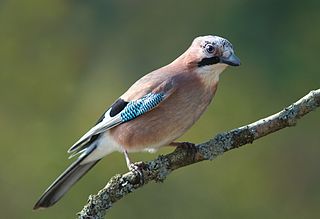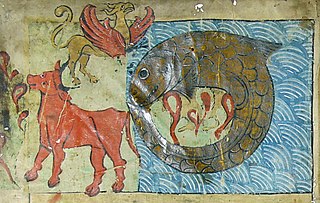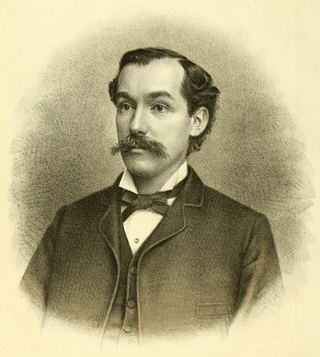Related Research Articles

The northern harrier, also known as the marsh hawk or ring-tailed hawk, is a bird of prey. It breeds throughout the northern parts of the northern hemisphere in Canada and the northernmost USA.

The crab-plover or crab plover is a bird related to the waders, but sufficiently distinctive to merit its own family Dromadidae. Its relationship within the Charadriiformes is unclear, some have considered it to be closely related to the thick-knees, or the pratincoles, while others have considered it closer to the auks and gulls. It is the only member of the genus Dromas and is unique among waders in making use of ground warmth to aid incubation of the eggs.

The Eurasian jay is a species of passerine bird in the crow family Corvidae. It has pinkish brown plumage with a black stripe on each side of a whitish throat, a bright blue panel on the upper wing and a black tail. The Eurasian jay is a woodland bird that occurs over a vast region from western Europe and north-west Africa to the Indian subcontinent and further to the eastern seaboard of Asia and down into south-east Asia. Across this vast range, several distinct racial forms have evolved which look different from each other, especially when comparing forms at the extremes of its range.

Coraciidae is a family of Old World birds, which are known as rollers because of the aerial acrobatics some of these birds perform during courtship or territorial flights. Rollers resemble crows in size and build, and share the colourful appearance of kingfishers and bee-eaters, blues and pinkish or cinnamon browns predominating. The two inner front toes are connected, but not the outer one.

The grey heron is a long-legged wading bird of the heron family, Ardeidae, native throughout temperate Europe and Asia, and also parts of Africa. It is resident in much of its range, but some populations from the more northern parts migrate southwards in autumn. A bird of wetland areas, it can be seen around lakes, rivers, ponds, marshes and on the sea coast. It feeds mostly on aquatic creatures which it catches after standing stationary beside or in the water, or stalking its prey through the shallows.

The red knot or just knot is a medium-sized shorebird which breeds in tundra and the Arctic Cordillera in the far north of Canada, Europe, and Russia. It is a large member of the Calidris sandpipers, second only to the great knot. Six subspecies are recognised.

The Ziz is a giant griffin-like bird in Jewish mythology, said to be large enough to be able to block out the sun with its wingspan.

The spruce grouse, also known as Canada grouse, spruce hen or fool hen, is a medium-sized grouse closely associated with the coniferous boreal forests or taiga of North America. It is the only member of the genus Canachites.

An egg is an organic vessel grown by an animal to carry a possibly fertilized egg cell and to incubate from it an embryo within the egg until the embryo has become an animal fetus that can survive on its own, at which point the animal hatches.

A bird nest is the spot in which a bird lays and incubates its eggs and raises its young. Although the term popularly refers to a specific structure made by the bird itself—such as the grassy cup nest of the American robin or Eurasian blackbird, or the elaborately woven hanging nest of the Montezuma oropendola or the village weaver—that is too restrictive a definition. For some species, a nest is simply a shallow depression made in sand; for others, it is the knot-hole left by a broken branch, a burrow dug into the ground, a chamber drilled into a tree, an enormous rotting pile of vegetation and earth, a shelf made of dried saliva or a mud dome with an entrance tunnel. The smallest bird nests are those of some hummingbirds, tiny cups which can be a mere 2 cm (0.8 in) across and 2–3 cm (0.8–1.2 in) high. At the other extreme, some nest mounds built by the dusky scrubfowl measure more than 11 m (36 ft) in diameter and stand nearly 5 m (16 ft) tall. The study of birds' nests is known as caliology.
Kosher foods are foods that conform to the Jewish dietary regulations of kashrut. The laws of kashrut apply to food derived from living creatures and kosher foods are restricted to certain types of mammals, birds and fish meeting specific criteria; the flesh of any animals that do not meet these criteria is forbidden by the dietary laws. Furthermore, kosher mammals and birds must be slaughtered according to a process known as shechita and their blood may never be consumed and must be removed from the meat by a process of salting and soaking in water for the meat to be permissible for use. All plant-based products, including fruits, vegetables, grains, herbs and spices, are intrinsically kosher, although certain produce grown in the Land of Israel is subjected to other requirements, such as tithing, before it may be consumed.
A seudat mitzvah, in Judaism, is an obligatory festive meal, usually referring to the celebratory meal following the fulfillment of a mitzvah (commandment), such as a bar mitzvah, bat mitzvah, a wedding, a brit milah, or a siyum. Seudot fixed in the calendar are also considered seudot mitzvah, but many have their own, more commonly used names.

The rufous-tailed lark, also sometimes called the rufous-tailed finch-lark, is a ground bird found in the drier open stony habitats of India and parts of Pakistan. Like other species in the genus it has a large finch-like bill with a slightly curved edge to the upper mandible. The dull brown colour matches the soil as it forages for grass seeds, grain and insects. Males and females are indistinguishable in the field but during the breeding season, the male has a courtship display that involves flying up steeply and then nose-diving and pulling up in a series of stepped wavy dips accompanied by calling. They forage on the ground in pairs or small groups.

The lesser nighthawk is a nightjar found throughout a large part of the Americas. This bird looks similar to the common nighthawk but is slightly smaller, has a slightly less deeply forked tail, and is more buffy in coloration. Their distinctive mouths are very well adapted for capturing insects mid-flight.

Kosher animals are animals that comply with the regulations of kashrut and are considered kosher foods. These dietary laws ultimately derive from various passages in the Torah with various modifications, additions and clarifications added to these rules by halakha. Various other animal-related rules are contained in the 613 commandments.

The Kentish plover is a small wader of the family Charadriidae that breeds on the shores of saline lakes, lagoons, and coasts, populating sand dunes, marshes, semi-arid desert, and tundra. Both male and female birds have pale plumages with a white underside, grey/brown back, dark legs and a dark bill; however, additionally the male birds also exhibit very dark incomplete breast bands, and dark markings either side of their head, therefore the Kentish plover is regarded as sexually dimorphic.

The spotted nightjar or spotted eared-nightjar is a species of nightjar in the family Caprimulgidae. It inhabits much of mainland Australia and has also been found in several Indonesian islands. Its natural habitats are open forests and woodlands, scrub, spinifex and tussock grassland, savannah woodland and mangroves.

The rose robin is a small passerine bird native to Australia. Like many brightly coloured robins of the Petroicidae, it is sexually dimorphic. The male has a distinctive pink breast. Its upperparts are dark grey with white frons, and its tail black with white tips. The underparts and shoulder are white. The female is an undistinguished grey-brown. The robin has a small black bill and eyes.
Tafasta merube lo tafasta is a Talmudic idiom used to express the idea that when it is possible to take a particular law from two different sources, it should be taken from the narrower of the two, in order to stay on the safe side and avoid making assumptions about which is correct. It is akin to the logical concept of "proving too much".

Thomas George Gentry was an American educator, ornithologist, naturalist and animal rights writer. Gentry authored an early work applying the term intelligence to plants.